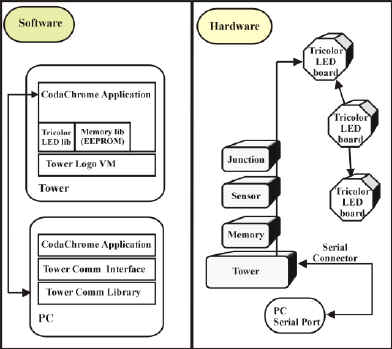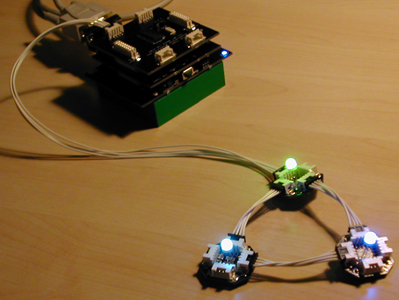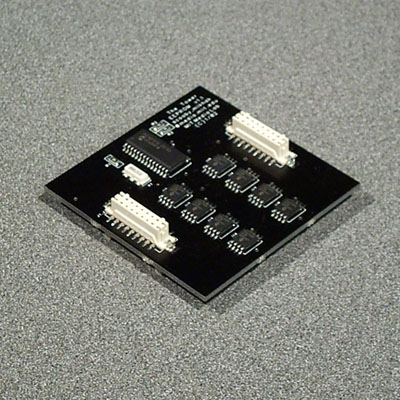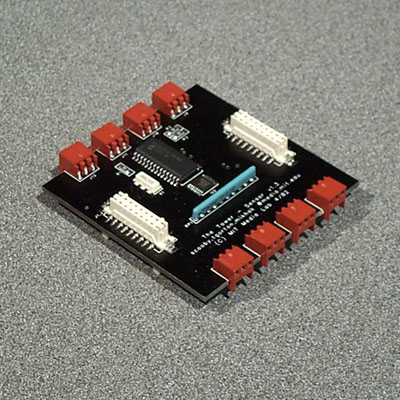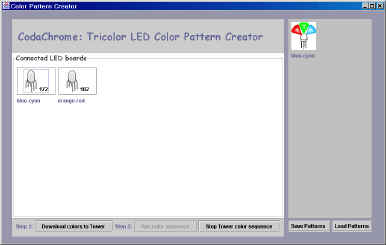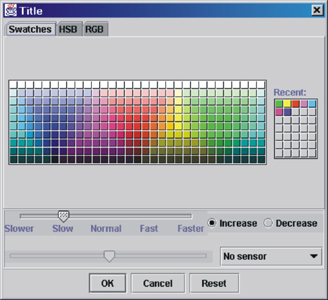|
public
int[] getLEDIDs();;
//get the IDs of the connected to the Tower Tricolor modules
public int
getLightSensorValue(byte num);
//return the light sensor value from the Tower
public byte getOpticalValue();
//return the optical distance sensor value
public void setTricolor(byte id, byte r, byte g, byte b, byte time);
//the basic primitive that makes the transition from the current color to
the specified RGB value (r,g,b) in the designated amount of time (time)
public void play();
//start looping the color patterns on all the Tricolor modules
public void
stopPlay();
//stop the looping of the color patterns
public void download(LEDLoop[] loops);
//download the vector with the RGB values and the transition times for
all the Tricolor modules
public void setBoardID(byte newID);
//set the unique ID to each Tricolor module
public boolean isLEDConnected(byte id);
//check if Tricolor modules have been disconnected
|
The
Tower Foundation runs a Virtual Machine (VM) that interprets a variant of
the Logo language, using simple libraries to communicate with attached
layers. On this platform, a Logo program manages the communication with
the desktop in order to identify the connected Tricolor modules and store
and play color sequences.
For
the purposes of communication an interface to the CodaChrome Application
(written in Java) was written to separate and abstract the application
from the program in Logo running on the Tower.
Some
of the methods of this interface are shown here. |
